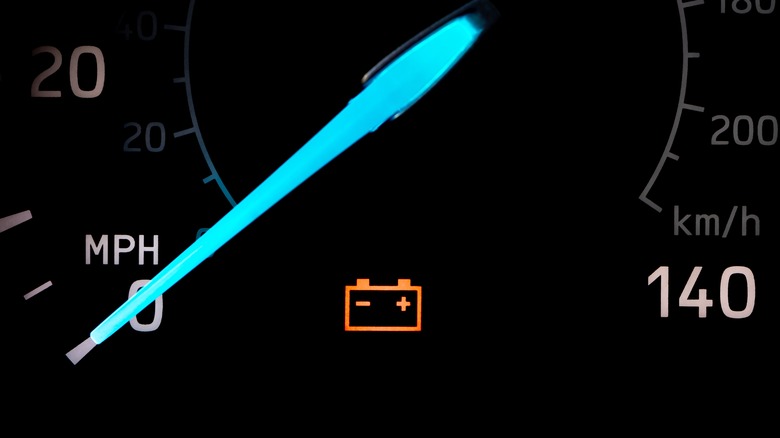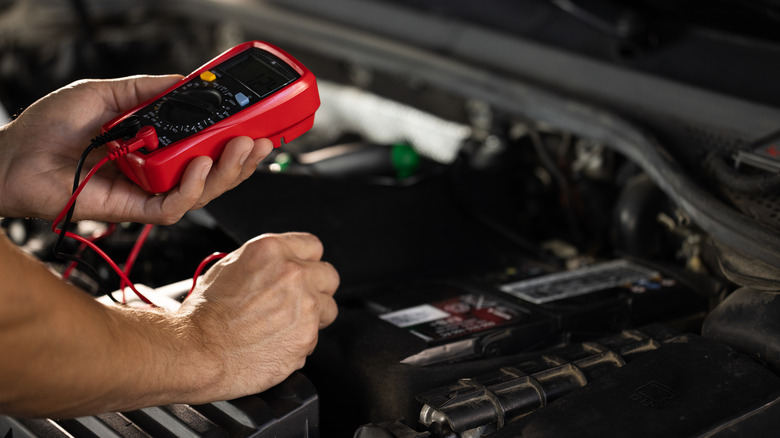
J.J. Gouin/Shutterstock
By C. Gordon/
When a warning light like the battery icon pops on and the car seems to otherwise be running fine, we tend to try and convince ourselves that the light just came on randomly. But the longer we drive, the more worry sets in. All sorts of lights on the dashboard can sometimes flicker temporarily after you’ve just started the car, which is often nothing to worry about. A battery light while driving, even if there are no other symptoms, can still be a slight cause for concern, and may necessitate canceling whatever plans you have later that day.
It can be frustrating when a battery light isn’t accompanied by other associated issues. According to Jiffy Lube, these can include the radio not turning on, power windows sluggishly moving, and stuttering or clicking noises when turning on, among others. More often than not, the light is an indication of a problem with the battery or charging system, hopefully a minor one. These can include loose or corroded battery cables, an issue with the alternator or voltage regulator, damaged cells or wiring with the battery, or another electrical issue.
What to check for

Mykola Pokhodzhay/Getty Images
None of that is good obviously, but doing something about that light sooner than later can prevent something minor from suddenly becoming a major issue and leaving you without power at the side of the road. When you’re driving and see it turn on, you’ll want to take the «Apollo 13» approach and turn everything off that you can, which may be drawing power and exacerbating the problem.
It’s often ideal in this situation to take your car to some sort of professional as soon as possible just to be safe, but in lieu of this, there’s a few steps you can take to identify and potentially alleviate the issue. The most hopeful of these issues is that the battery light is on due to loose cable clamps. In this situation, it’s best to consult your owner’s manual for any recommendations, put on a pair of gloves, and tighten with a standard wrench or socket wrench. You can also look for any signs of corrosion near the top of the battery terminals, which looks like a white or greenish substance, and can be cleaned with a battery cleansing product (or baking soda and water), following the directions in the manual or the cleaning kit.
Other options include taking a look at the alternator for any loose or detached connections, examining the serpentine belt for wear and tear, and testing your battery with a multimeter. What’s important to remember is that while the battery light is not always an emergency, it’s an indication that your battery may be on limited time. That’s why it’s sometimes best to go straight to a mechanic or some sort of professional, because if you turn your car off to check any of the above, it may not turn on again and require a jump.